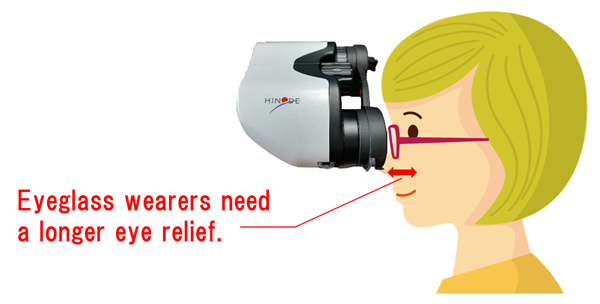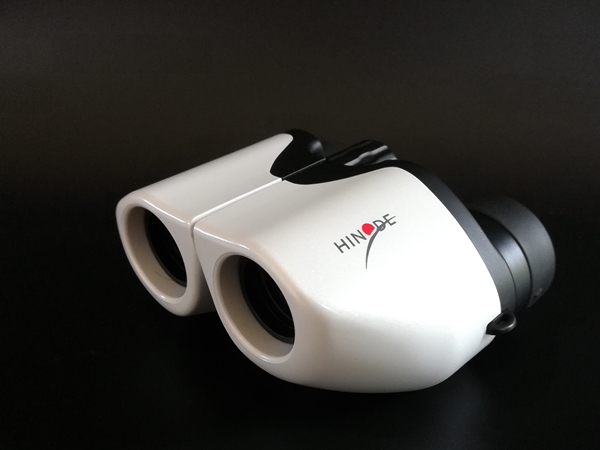Being an enthusiast stargazer triggered my interest in binoculars. However, I have little experience with birding, although I know it is one of the most popular outdoor activities people use binoculars for.
When it comes to binoculars for birding, my stereotypical idea is that birders prefer 8× or 10× magnification. But that certainly isn’t enough knowledge to write an article that helps beginners choose good binoculars for birding.
To make up for my lack of knowledge, I asked an experienced bird watcher, Mr. Bird55, who has been a devoted birder from childhood.
He has been posting beautiful pictures of birds on his blog (https://ameblo.jp/bird55-2019/) since he retired ten years ago.
His advice to newcomers was completely different from what I had expected. I want to thank Mr. Bird55 for generously accepting to be interviewed for this article.
During the interview, I came to realize how knowledgeable he is about birding and binoculars and his deep respect for nature.
Contents
Ask an experienced bird watcher: What are the best binoculars for birding?
After I made an appointment, I gave him a call to ask about good binoculars for birding.
Q: How do Japanese bird watchers enjoy birding?
Bird55
About twenty years ago, there were few bird watchers in Japan. Although birding had been a popular outdoor activity in the U.S. for decades, in Japan birding was still a relatively new hobby.
However, since the emergence of digital cameras, the number of birders here has taken off.
After a famous nature photographer here took a beautiful picture of a kingfisher, soon many amateur photographers were eager to take photos of birds.

https://ameblo.jp/bird55-2019/entry-12506751834.html
The Kingfisher has become one of the most popular birds among Japanese birders. As the number of kingfishers is on the increase, more and more people are able to take pictures of the bird.
Many of the birders in Japan are older and retired, but they are sharing information about the birds they find on social media. Once rare birds are found, there is often a crowd of birders at the same spot the next day.
Isao
I see. Do they use binoculars for birding? How do they enjoy birding?
Bird55
As far as I know, most of them do not use binoculars. They prefer taking photos rather than watching birds through binoculars.
Some people do carry binoculars in their backpacks, but they often do not even take them out. I guess they don’t feel the need for binoculars.
Isao
Can you explain why?
Bird55
With the latest digital cameras, they can get a good view of birds on the monitor.
They seem happy with the image of birds through a telephoto lens. That must be bad news for binocular sellers. Ha-ha!
Q: How do you use birdwatching binoculars?
Isao
How about you, Mr. Bird55? I hear that you have experience using several types of binoculars for bird watching.
Bird55
My first pair were 8×30 Porro Prism binoculars my father bought when I was a young boy. 8× is considered to be a standard configuration for birding.
Since then, I have bought many types, such as 10×50, 7×42, and Image Stabilized binoculars for watching waterfowls.

The binoculars Bird55 have been using
At one point, however, I noticed that I wasn’t taking my binoculars with me as often as before. This was because I wanted to take my digital camera with me.
Since I have my camera around my neck, having my regular birding binoculars around my neck as well is a burden.
However, in the forest, to find a bird quickly for a photo with the naked eye is difficult.
My solution was to use compact binoculars, which are not usually considered suitable for birding because of the lack of power.
Isao
How do you carry compact binoculars with a camera hanging from your neck?
Bird55
That’s a good question! Whenever I walk in the forest, I have a backpack on my back. I attach the binocular case to my belt so that I can take them out and return them quickly.

Isao
That’s a good way to carry your camera and binoculars at the same time.
But, I’m guessing the compact binoculars are not very bright and don’t have enough power to find small birds in the forest. Are they as useful as regular binoculars, such as 8×30 or 7×42?
Bird55
I sometimes get that question, but my answer is that compact binoculars are good enough for birding.
First, let me tell you what is most important when you choose binoculars for birding.
What Bird55 thinks is essential to buy good binoculars for birding.
・Compactness
Now we are in the era of digital cameras; large binoculars should be replaced with compact ones.
For compact binoculars, Reverse Porro Prism or Mini Porro Prism are best because they can be made small. So you do not have to buy Roof Prism binoculars which cost more.
・Depth of focus
The depth of focus is directly related to the f-number, which is not shown anywhere in the specifications.
As an example, I’ll talk about 7×50 to explain what this means.
7×50 has an approximately 7mm exit pupil. If the focal distance is 150mm, the f-number can be calculated as follows:
However, this is based on a pupil size of 7mm which is near the maximum the human eye can achieve in darkness. Our pupils only open to about 3.5mm in daylight, so only half of the aperture is used.
As a result, the depth of focus grows significantly.
In the forest, birders need to locate a target through the layers of trees, branches, and leaves.
If the depth of focus is shallow, it will be difficult to find your target. When you focus on one target, other targets at different distances will be out of focus.
It takes less time to spot a target with a sufficient depth of focus because you have a wide range of clear image at any one time.

Left: sufficient depth of focus, Right: Insufficient depth of focus.
Since we can’t see the f-number of binoculars, you have no choice but to compare your pair with other pairs.
・Low-powered and a wide field of view
If you want to take photos of birds, binoculars should play an important role in finding your target quickly. All you need are low-powered binoculars with a wide field of view.
Some are obsessed with the tiny difference in the field of view. In 8×42, they strongly prefer an 8 degrees field of view instead of 7.5 degrees.
However, choosing low-powered binoculars, like 5×20, enables you to have as wide as 11 degrees in the field of view.
・Long eye relief
Eyeglass wearers need to choose binoculars with long eye relief (over 15mm) so that they can get a full field of view. You can check the number in the specifications.

・Brightness
Birds are most active early in the morning, especially just before dawn. Their songs are most energetic in the morning, mainly in an attempt to attract a mate. Birding is best early in the morning.
Taking the above into consideration, you should use bright binoculars with an exit pupil of over 4mm. The larger the exit pupils are, the more light you can get through the binoculars.
The diameter of the exit pupil can be calculated as follows:
Aperture (mm) ÷ Magnification = Exit Pupil (mm)
For example, 7×42 binoculars have 6mm exit pupils.
A level of lens coating is also essential in dim light. Good quality binoculars have anti-reflection coatings on their lenses, which raises the light transmittance, producing a brighter image.
It is not difficult, even for novices, to check the grade of lens coatings under a light. Expensive binoculars have more complex coatings.

Top: Non-coated, Bottom: Fully-coated
Q: What are the best compact binoculars for bird watching?
Isao
As an experienced bird watcher, what binoculars do you usually choose for birding?
Bird55
I like the Hinode A5 5×21 overall.

Isao
That pair certainly produces a clear and wide view for compact binoculars. However, I’m wondering if 5× magnification is too low for birding.
Bird55
Some think so at first. But once I let them try my pair, they agree with me and want to know where to get a pair for themselves.
Isao
Flattery doesn’t really work with consumers, though Hinode Optics must be happy to hear that!
Bird55
After using these once, you’ll realize that this compact pair is amazingly useful, especially in the forest.
First, this pair is less shaky than binoculars with magnifications of 8× or 10×, which is considered to be the standard for birding. I feel much more comfortable using these.
Next, low-powered binoculars give me less eye strain. I wear glasses, but I can get a full view. I think this is because of the generosity of the eyepoint.
Different binoculars have different margins in their eyepoint, which is not found in the specifications. I am happy with the leeway of the Hinode A5.
Also, the depth of focus is so much that I rarely have to turn the focusing knob. With such a wide field of view at any one time, I can spot my target bird easily, even in the forest.
For these reasons, I think the Hinode A5 is the best for birding.
Q: What is the best magnification for binoculars for bird watching?
Isao
I apologize for asking you the same question again, but are you really happy with such low-powered binoculars?
Bird55
Of course, yes. When I joined a group of birders to look for grey-faced buzzards, I brought my Hinode A5. The bird is a kind of a hawk, which is a migratory bird.

https://www.youtube.com/watch?v=CvCE9WiNSxY&t=4s
As others were searching anxiously for them with their large binoculars and their digital cameras with telephoto lenses, I was the first person to catch sight of a grey-faced buzzard.
I was quite delighted with their puzzlement that I could find them first with such compact binoculars. The configuration of 5×21 works best for birding in the digital era.
Isao
For birders, compact binoculars go surprisingly well with a digital camera. A wide field of view lets birders spot their targets quickly, is that right?
Bird55
Yes. Large binoculars are not worth bringing if they are not going to be used. I give first priority to how often a pair is used.
Isao
Finally, I agree with you. Thank you very much for sharing your time today.
Bird55
You’re most welcome. I hope more people in the U.S. will realize how useful compact binoculars are for birding. Of course, if you don’t take photos, large binoculars still work well for birding.
Even though I’m interested in photographing birds, I still enjoy watching them through binoculars as I can see them in three dimensions.
Summary
If you want to take photos of birds rather than just watching them with binoculars, you should choose compact binoculars. When you hang your camera around your neck, you won’t want to also carry heavy binoculars.
Because of their many advantages, low-powered compact binoculars can be the new standard instead of 8×30 or 10×42.
Bird55, an experienced bird watcher, likes to use the Hinode A5 5×20 for birding for the following reasons.
First, with the A5, Bird55’s view is free from shake because of the low magnification. Secondly, he does not get tired even after using them for a long time.
This is because they are compact and lightweight and the eye relief is long enough for eyeglass wearers with the generous eyepoint.
Thirdly, with a wide field of view and a sufficient depth of focus, the Hinode A5 enables him to find his target birds faster than the other birders around him.
At first, I doubted that compact binoculars were more useful than the standard birding binoculars such as 8×30 and 10×40. However, after Bird55’s explanation based on his experience, I came to believe it.
Low-powered, compact binoculars are worth trying for birding if you like to take photos of birds.
